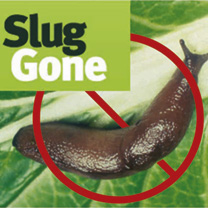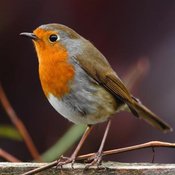Summer is great for us but the hot weather, combined with our summer gardening activities, can prove a challenge for wildlife. Here’s how you can help the wildlife in your garden thrive (and survive!) this summer.
Leave areas of long grass
Cutting your lawn less often creates a refuge for small animals, frogs, newts and insects – especially when you leave areads of long grass around ponds.
If you do need to cut an area of long grass or overgrown vegetation, carefully check it for signs of wildlife before you start up your strimmer or mower! Hedgehogs are especially prone to strimmer-related injuries, as their fear response is to freeze and curl up in a ball – that’s no defence against power tools! So, take a look thruogh any areas you’re planning to cut and maybe run a garden rake gently through longer grass first. The, if you find a hedgehog or frog, simply pop on a pair of gardening gloves and move it to safety nearby.
Avoid trimming your hedge
The RSPB recommends that you avoid trimming hedges between 1st March and 31st August, although some birds may nest outside of this period. Ensure that any nests are unoccupied before you start work – it is an offence to intentionally damage or destroy wild bird nests that are in use or being built.
Grow beneficial plants, shrubs and trees
There are lots of wildlife-friendly species available including varieties that benefit bees, butterflies and other pollinators, and those which provide seeds as food for birds during the winter. Trees and large shrubs offer shelter too, giving birds somewhere safe to roost and to nest. Grow whichever species you have the room for and remember that native species have fantastic benefits for wildlife.
Feed the hedgehogs
Specialist hedgehog food or wet meat-based dog or cat food is great for supporting emerging hoglets and their mums. They don’t have long to fatten up in preparation for hibernation. Also, check that any drains around your home are properly covered (try using chicken wire) to prevent them from falling in.
Keep feeding birds
Birds require high protein foods during the summer months, especially while they are moulting, so the RSPB recommends only feeding them certain foods. These include Black sunflower seeds, pinhead oatmeal, soaked sultanas, raisins and currants, mild grated cheese, mealworms, waxworms, mixes for insectivorous birds, good seed mixtures without loose peanuts. Avoid peanuts, fat and bread as these can be harmful to chicks.
Remember to clean your bird feeders regularly or you could be spreading diseases. Keep bird tables and feeders clean and free from droppings and mouldy food, and wash them regularly with a solution of 50% disinfectant.
Make fresh water available
A shallow dish of clean water left on the ground makes an excellent drinking and bathing spot for birds, amphibians and hedgehogs. Leave it in an open spot, away from places where cats might hide in wait, or raise your bird bath up out of harm’s way. Water dishes should be rinsed out and replenished daily.
Neaten your nets
Birds will be attracted to any soft fruit that you are growing, so you may need to cover fruit bushes in netting. The RSPB advises using 4cm netting as this reduces the possibility of birds getting caught in it – you’ll also need to keep the net taut. Try hanging old CDs from it to make it more visible to birds.
Football goal netting can be hazardous to foxes, deer, hedgehogs and birds. Putting nets away after use will prevent animals and birds becoming trapped.
If you have a wire mesh fence you’ll need to check it regularly for trapped wildlife.
Perfect your pond
If you have a net across your pond, ensure that it is kept taut to avoid small animals and birds becoming caught in the mesh.
Many small birds use ponds to drink from and bathe in, so consider adding low-hanging branches, sloping sides, a ramp and/or a platform in the middle to give them an escape route or refuge until you can help them.
Careful with that compost heap!
Be careful when turning your compost heap! Hedgehogs and other small animals nest in the bottom of a warm compost heap and a garden fork is a rude awakening (or worse). They also forage in woodpiles, so move your logs or garden waste before lighting a bonfire.
Take a look at our range of wildlife feeders, drinkers, nest boxes and habitats here – and give wildlife a helping hand in your outside space.
Last Updated on October 22, 2025 by Suttons Horticultural Team





